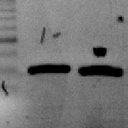Stilbene biosynthesis in the needles of spruce Picea jezoensis.
Keywords
Abstract
Stilbenes are valuable phenolic compounds that are synthesized in plants via the phenylpropanoid pathway where stilbene synthase (STS) directly catalyzes resveratrol or pinosylvin formation. Currently, there is a lack of information about the stilbene biosynthetic pathway in spruce (Picea). Resveratrol and piceatannol derivatives have been detected in the spruce bark, needles, and roots. We analyzed seasonal variation in stilbene spectrum and content in the needles of different ages of one tree of spruce Picea jezoensis. HPLC analysis revealed the presence of nine stilbenes: t- and cis-astringin, t- and cis-piceid, t- and cis-isorhapontin, and t-piceatannol were present in amounts of 0.01-6.07 mg/g of dry weight (DW), while t-isorhapontigenin and t-resveratrol were present in traces (0.001-0.312 μg/g DW). T-astringin prevailed over other stilbenoid compounds (66-86% of all stilbenes). The highest total stilbene content was detected in one-year-old needles collected in the autumn and spring (5.4-7.77 mg/g DW). We previously cloned and sequenced full-length cDNAs of the four STS transcripts (PjSTS1a, PjSTS1b, PjSTS2, and PjSTS3) of P. jezoensis. This study presents a detailed analysis of seasonal variations in PjSTS1a, 1b, 2, and 3 transcript levels in the needles of P. jezoensis of different ages using qRT-PCR. PjSTS1a and PjSTS1b transcription was higher in the needles collected in the autumn, spring, or summer than in the winter. PjSTS2 was actively transcribed in the needles of all ages collected in the winter, spring, and summer. PjSTS3 expression did not significantly change during the year and did not depend on the age of the needles. Therefore, the data show that high levels of the stilbene glucosides and PjSTS expression are present in the needles of P. jezoensis.


